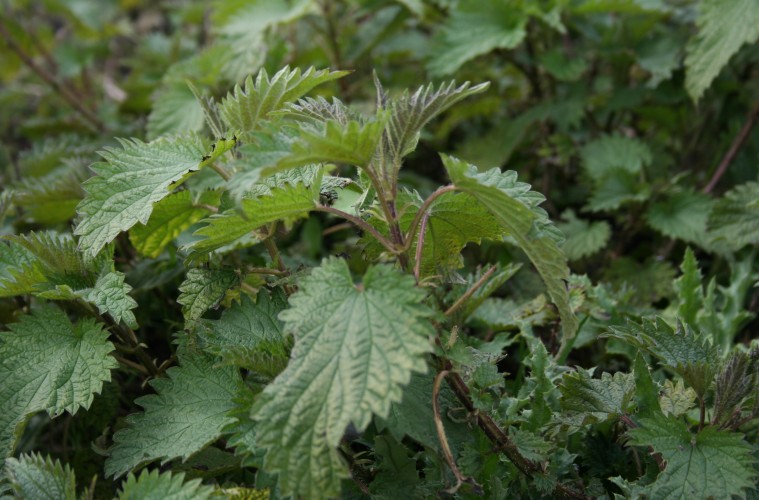The possibilities of the nettle
Most people will know the nettle as a pesky plant. A plant that gives you a burning pain the minute you touch it. But the nettle is actually a very interesting plant. You can eat it, you can brew tea of it and you can even make clothes with it. And it is a host plant* for very beautiful butterflies.
Formic acid
Nettles have hair-thin, hollow tubes on the leaves and stalks with formic acid in it. The tubes break when you touch them and the formic acid will land on your skin, which gives you a ‘burning sensation‘ at first, followed by swelling, reddening and itching. The concentration of formic acid is especially high in early spring. (Source: Kruidenencyclopedie.)
Healthy
Just in spring the young nettle leaves are collected and used to brew tea, make soup or cook as a vegetable. Nettles contain a lot of chlorophyll, vitamin A, B and C and minerals, especially calcium and iron.
You can brew tea of young nettle leaves. Add the leaves together with the boiling water and let it brew for 10 minutes. The tea has a distinct flavor, but is super healthy. The herb has a strengthening effect on the whole body and is especially suited to eliminate anemia. (Source: Kruidenencyclopedie.)
Rediscovered
The stinging nettle contains of a lot of fiber, which is used for making clothes. It’s very commonly used in Tibet and Nepal, but now also in The Netherlands. The nettle fibers are stronger and lighter than cotton. In addition, the herb is used as a dye substance for textiles and handmade paper. (Source: brandendekwestie.nl.) And the chlorophyll in nettle is used as coloring agent E140 in our food and medicines.
*Host plant
The stinging nettle is also the host plant for some of the most beautiful butterflies in Holland, such as the Atalanta, the Small Tortoiseshell and the Peacock. This means that the butterflies lay their eggs in the nettle, because the caterpillars need this plant to in order to grow.
Do you also want to brew nettle tea? Then pick the tips of the nettle, wash them and boil them in water for 10 minutes.
Photo credits: Hanneke Sloof

